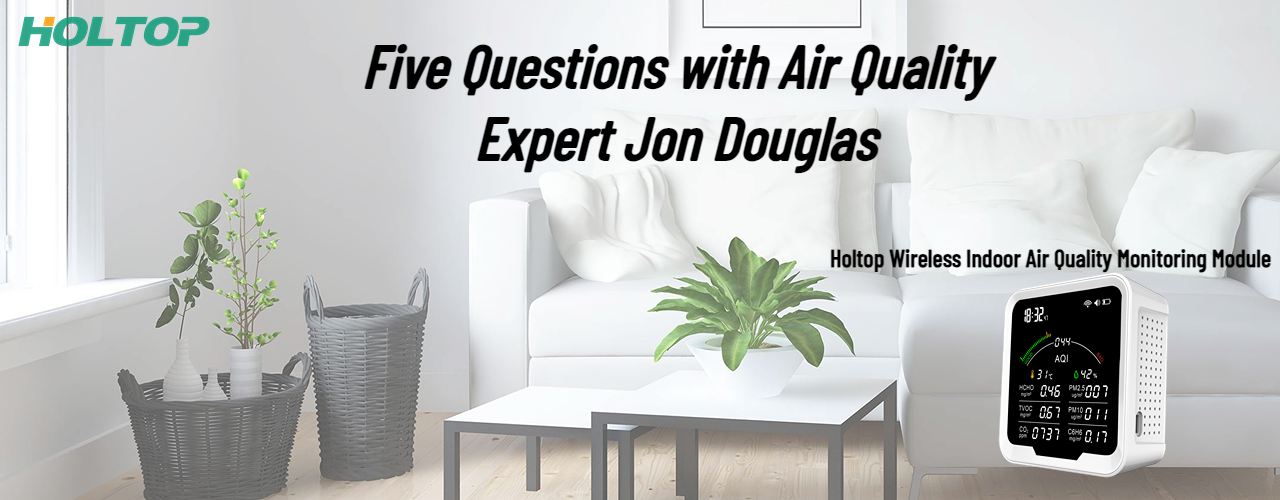
With smoke from wildfires in the news, impacting large portions of North America, we sat down with Jon Douglas, the air quality expert, for advice everyone can use to protect indoor air quality when outdoor conditions become extreme.
How are the wildfires impacting air quality?
Wildfires, when they burn, actually generate small particulates in the air. That is what you see when you see smoke. Those particles can actually flow very long distances. For example, today the fires in Canada are actually impacting the air quality in New York City. These small particles impact human health by infiltrating your lungs and causing health problems. Outdoor air quality can also impact the air quality inside buildings. Most buildings bring in outside air to improve the indoor air quality. If that outside air is not filtered it can increase the particulate matter inside the building.
What can building owners and managers do now to protect the health of occupants now?
Building Owners and Managers can protect and promote the health of their tenants, residents and employees by improving indoor air quality. A key component of indoor air quality is outside air ventilation. Outside air ventilation reduces the number of gas-based contaminants in a building by diluting it with outside air. In times like now where we have wildfires, outside air is dirtier than inside air in terms of particles. So, it is very important that as you are bringing in outside air that you filter that outside air. Many buildings use a low-efficiency filter on that outside air. We encourage building managers and building operators to improve the efficiency of their filter to reduce the amount of particles brought into the building. Filters are rated on a MERV scale. Low-efficiency filters are typically MERV 4 to MERV 5. Medium-efficiency filters are MERV 7 to MERV 8, and high-efficiency filters are typically around MERV 13. We would encourage building operators to run a MERV 13 filter on their outside air, especially in times of wildfires.
What can people do to help protect themselves at home from poor air quality outside?
Folks have asked me “what can I do to protect my family in light of these wildfires?” and I have a couple of recommendations. Number one, put the best filter you can in your central HVAC system. At home, most people have the simple filters that you buy at a retailer, typically rated at a MERV 7 or MERV 8. I would recommend you go to the store and buy a MERV 13 filter, which is about the best filter you can put in your HVAC system. If that is not enough, I would recommend buying small portable air cleaners at any online retailer. The key parameter to look for is the clean air delivery rate. This is a measure of the amount of air cleaning that the system can do. The higher the cleaner delivery rate the better.
What can those building owners and managers do to improve future indoor air quality?
To maintain good indoor air quality in a building, it is important to monitor the air quality. What we have learned in the past is that people know when they are hot or cold. Any problems in the building that are associated with comfort tend to get raised and fixed. People do not know whether they are getting good indoor air quality. So, problems associated with maintaining the indoor air quality systems are typically not addressed. And we found routine problems go undetected for a long period of time. We recommend installing good quality indoor air quality sensors in the space. A good indoor air quality sensor will measure the following parameters: temperature, relative humidity, carbon dioxide particulate matter and total volatile organic compounds.
What lessons learned on indoor air quality during the pandemic can we apply to future events like wildfires?
COVID taught us the importance of managing indoor air quality in buildings. What we learned during COVID is that the COVID virus spreads through respiratory droplets. These droplets float through the air just like particles and enter your lungs and cause infection. One of the key tools for managing the COVID pandemic is filtration. And it turns out these same tools are good for managing the risk due to forest fires.
Post time: Jun-14-2023








